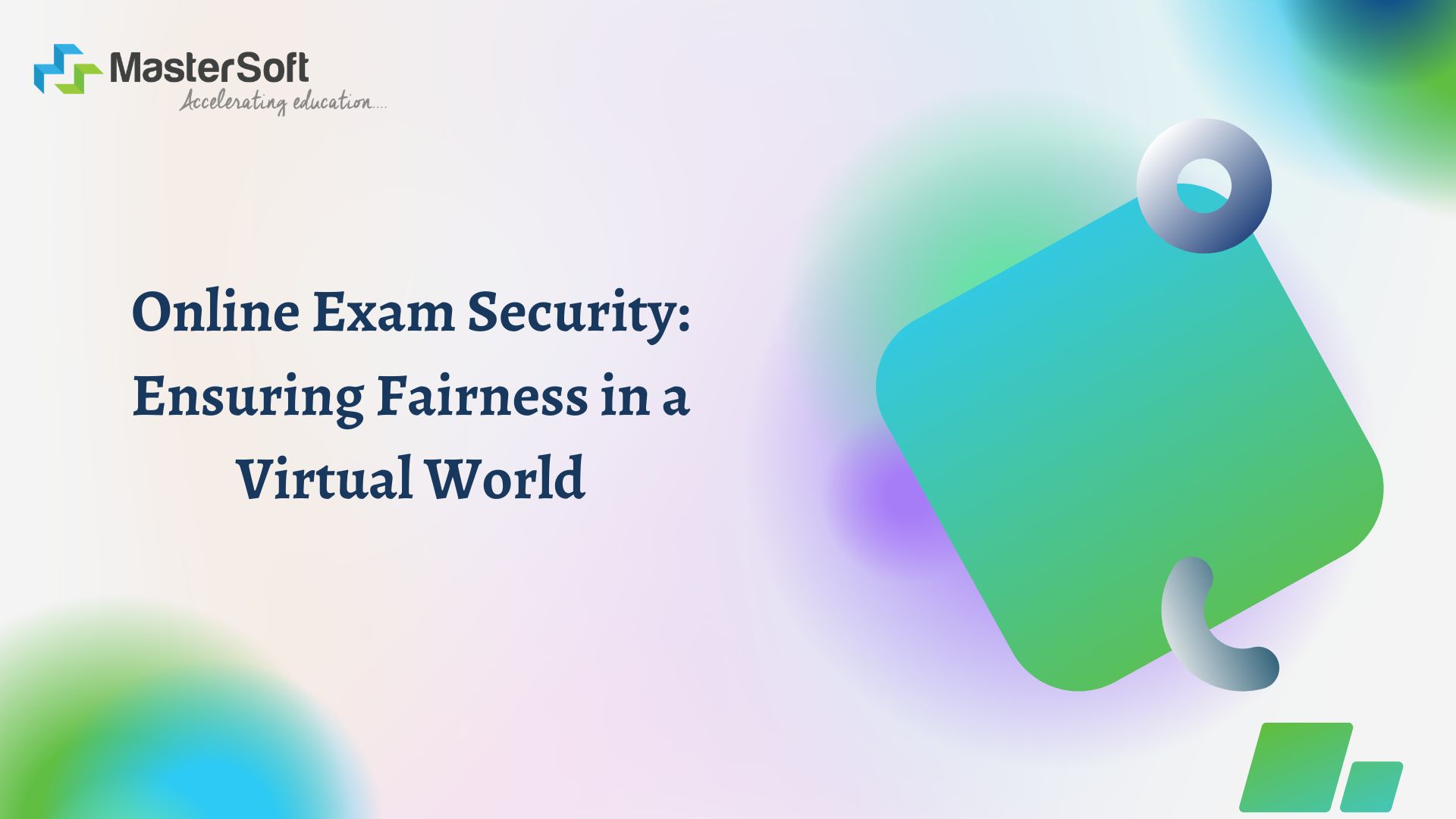In the ever-evolving landscape of education, the transition to online learning has become a necessity, especially in the wake of global events that have reshaped traditional teaching methods. One of the critical aspects of this shift is the adoption of online exams, which brings both convenience and challenges. As educational institutions embrace virtual assessments, the need for robust online exam security measures becomes paramount to ensure fairness and integrity in the evaluation process.
The Rise of Online Exams
online examination systems offer a multitude of advantages, such as flexibility, accessibility, and the ability to reach a broader audience. Students can take exams from the comfort of their homes, eliminating the constraints of physical locations and rigid schedules. However, with this convenience comes the pressing concern of maintaining the same level of security and fairness that traditional, in-person exams provide.
Challenges in Online Exam Security
1. Identity Verification:
Verifying the identity of online test-takers is a crucial aspect of ensuring exam integrity. Institutions must employ advanced authentication methods to confirm that the person taking the exam is indeed the enrolled student. Biometric verification, secure login credentials, and facial recognition are some of the tools that can be used to enhance identity verification.
2. Cheating Prevention:
The virtual nature of online exams makes it challenging to monitor students and prevent cheating. Traditional methods like in-person proctoring are not feasible, leading to the development of innovative solutions. Remote proctoring tools use AI algorithms to analyze students’ behavior, track eye movements, and detect unusual patterns that may indicate cheating.
3. Secure Exam Environment:
Creating a secure online exam environment involves restricting access to unauthorized materials and applications. Lockdown browsers and virtual desktops help ensure that students cannot use external resources during the exam. Additionally, webcam monitoring can deter students from engaging in dishonest practices.
4. Data Encryption:
Protecting sensitive exam data is crucial to prevent unauthorized access and tampering. Institutions must implement robust encryption protocols to secure exam questions, answers, and student information. This ensures that the entire exam process, from question creation to result delivery, is safeguarded against potential breaches.
Strategies for Ensuring Fairness
1. Clear Communication:
Educational institutions should communicate clearly with students about the expectations and rules surrounding online exams. Providing a detailed code of conduct and outlining the consequences of academic dishonesty helps set the tone for a fair and transparent examination process.
2. Training and Awareness:
Students and educators alike must be educated on the importance of maintaining integrity in online exams. Training sessions on the proper use of online exam tools, understanding the consequences of cheating, and promoting a culture of academic honesty can go a long way in preventing misconduct.
3. Continuous Monitoring and Adaptation:
Online exam security is an ongoing process that requires continuous monitoring and adaptation. Institutions should regularly assess the effectiveness of their security measures and update them in response to emerging threats and technologies. This proactive approach helps stay ahead of potential vulnerabilities.
4. Collaboration with Technology Providers:
Educational institutions should collaborate with technology providers specializing in online exam security. These partnerships can lead to the development and implementation of cutting-edge solutions that address the evolving challenges of virtual assessments.
Creating a secure online exam environment is crucial to ensure the integrity of the assessment process. Here are some key considerations and strategies for establishing a secure online exam environment:
- Use a Secure Online Platform:
- Choose a reliable and secure online exam platform that provides features such as encryption, secure login, and protection against cheating.
- Popular platforms include Moodle, Canvas, Blackboard, or specialized exam platforms like ProctorU or ExamSoft.
- Authentication and Authorization:
- Implement secure authentication methods to verify the identity of the test-taker. This may include username/password combinations, two-factor authentication, or biometric verification.
- Ensure that only authorized individuals have access to the exam content.
- Browser Restrictions:
- Use a lockdown browser or browser extension that restricts access to other websites and applications during the exam.
- Disable features like copy-paste and printing to prevent unauthorized sharing of exam content.
- Monitoring and Proctoring:
- Implement remote proctoring solutions to monitor test-takers during the exam. This can include webcam monitoring, screen sharing, and audio recording.
- Notify students in advance about the monitoring process and ensure privacy considerations are addressed.
- Randomization of Questions:
- Randomize the order of questions and answer choices to make it more difficult for students to share answers during the exam.
- Time Limits:
- Set reasonable time limits for each section of the exam to discourage cheating and ensure that students complete the assessment within the allocated time.
- IP Tracking:
- Monitor IP addresses to identify suspicious logins or multiple logins from different locations.
- Secure Exam Content:
- Protect exam content by encrypting files and using secure servers to store and deliver exam materials.
- Rotate and update question banks regularly to prevent the reuse of questions from previous exams.
- Clear Instructions and Policies:
- Clearly communicate exam instructions, expectations, and any consequences for cheating.
- Make sure students are aware of the consequences of violating academic integrity policies.
- Training for Instructors and Students:
- Provide training for instructors on how to use the online exam platform and interpret monitoring results.
- Educate students on the importance of academic integrity and the consequences of cheating.
- Post-Exam Analysis:
- Review exam data and analytics to identify any irregularities or patterns that may indicate cheating.
- Implement improvements based on the analysis to enhance the security of future exams.
Conclusion
As online examination systems become an integral part of the educational landscape, ensuring fairness in a virtual world requires a multifaceted approach. By implementing advanced identity verification, cheating prevention measures, and secure exam environments, institutions can maintain the integrity of online assessments. Clear communication, training, and continuous monitoring further contribute to creating an environment where academic honesty is prioritized. In this dynamic landscape, collaboration with technology providers is essential to stay ahead of potential security threats. Only through a comprehensive and adaptive strategy can educational institutions navigate the challenges of online exam security and provide a fair evaluation process for all students.
Remember that no system is entirely foolproof, so it’s essential to continually assess and improve your online exam security measures. Regularly updating your methods and staying informed about the latest advancements in online security will help maintain the integrity of your assessments.




